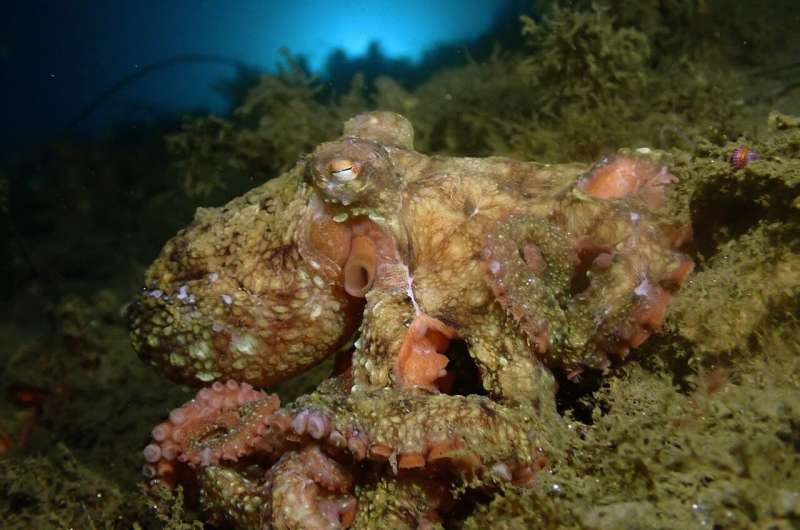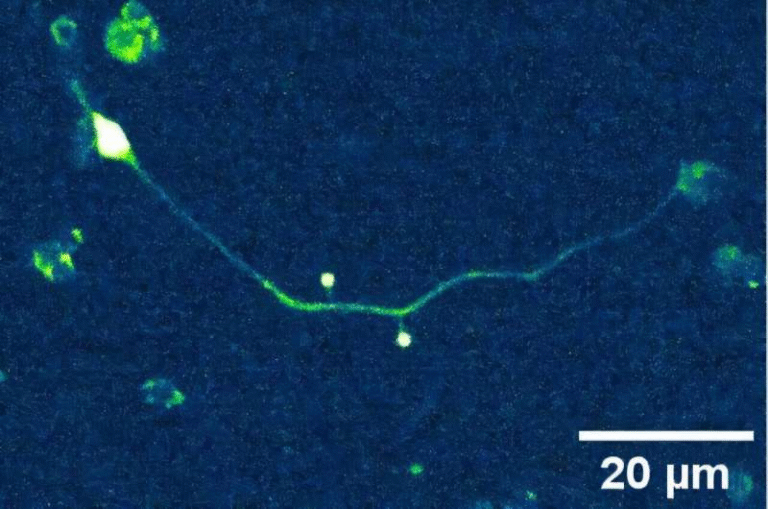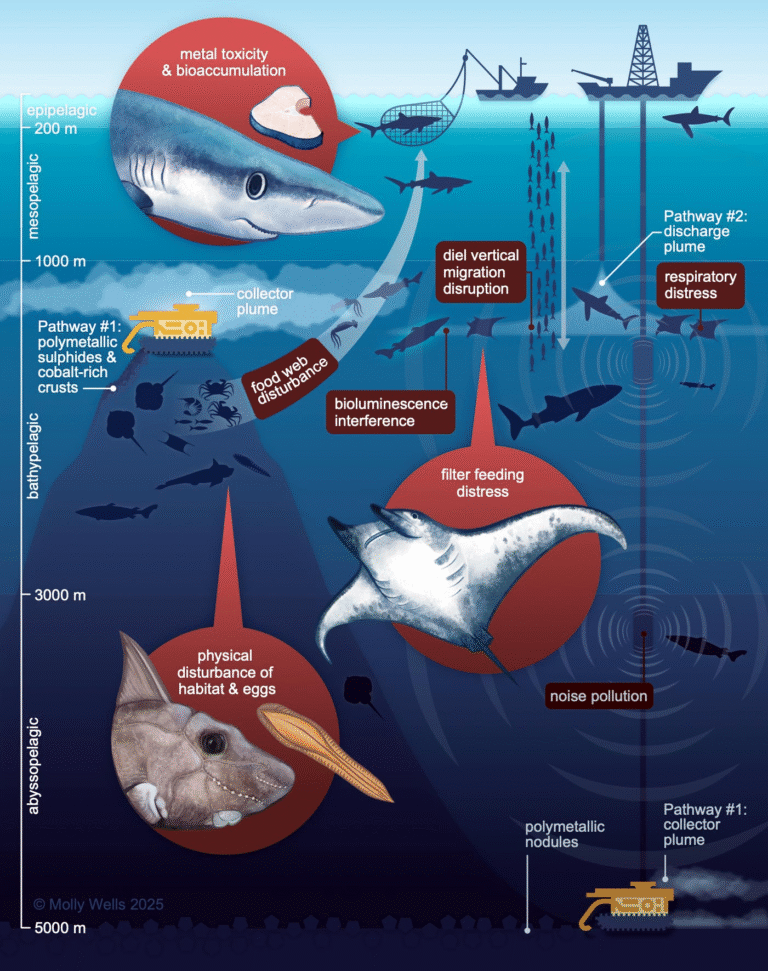Scientists at UC San Diego Create Lab-Grown Pigment That Powers Octopus Camouflage

Researchers from the University of California, San Diego have achieved something remarkable — they’ve successfully produced xanthommatin, the natural pigment that gives octopuses, squids, and cuttlefish their incredible camouflage abilities. This achievement marks a major step toward replicating one of nature’s most fascinating superpowers: instant color change.
The breakthrough was accomplished by a team from UC San Diego’s Scripps Institution of Oceanography, who found a way to manufacture this pigment in large amounts using bioengineered bacteria. This might sound simple, but xanthommatin has long been an elusive target for scientists — it’s notoriously difficult to produce in a lab and impossible to extract efficiently from animals.
Their work, published in Nature Biotechnology, introduces a new biotechnological process that allows for the pigment’s mass production at scales never achieved before. The pigment has huge potential — from photoelectronic devices and thermal coatings to cosmetics, dyes, and UV protectants.
The Powerhouse Pigment Behind Nature’s Masters of Disguise
Cephalopods — a group that includes octopuses, squids, and cuttlefish — are famous for their camouflage. Within seconds, they can shift color, texture, and even reflectivity to blend perfectly with their surroundings. This biological trick relies heavily on pigments like xanthommatin, which can alter color when exposed to light or chemical changes.
But cephalopods aren’t the only ones using xanthommatin. The pigment also appears in insects, adding vibrant hues to monarch butterflies, dragonflies, and even the red eyes of flies. Despite its importance across species, xanthommatin has been largely poorly understood because it’s hard to obtain and even harder to synthesize in useful quantities.
Harvesting it directly from animals isn’t sustainable, and traditional lab synthesis methods yield only tiny amounts — just a few milligrams per liter, at best. Researchers needed a more scalable, eco-friendly solution.
The New Biotech Approach
The UC San Diego team, led by marine chemist Bradley Moore and bioscientist Leah Bushin, set out to solve this supply bottleneck. Working with colleagues across the university and collaborators from the Novo Nordisk Foundation Center for Biosustainability in Denmark, they developed a process they call “growth-coupled biosynthesis.”
In simple terms, this method uses genetically engineered bacteria that are designed to survive only if they produce xanthommatin. The pigment’s production becomes a matter of life or death for the microbe — an ingenious way to “trick” the cell into making more of the desired compound.
Here’s how it works:
The researchers started with a genetically weakened (or “sick”) bacterium that couldn’t survive on its own. They engineered the cell so that, in order to live, it had to make both xanthommatin and formic acid. For every molecule of pigment the cell produced, it also made one molecule of formic acid — a compound that fuels the cell’s growth. This created a self-sustaining feedback loop, where pigment production directly supported cell survival.
By tying the cell’s life cycle to pigment production, the team ensured the bacteria had no choice but to produce huge amounts of xanthommatin.
Robotic Optimization and Evolution
To push production even further, the scientists brought in automation and computational biology. Using robotic systems, they conducted two high-throughput adaptive evolution campaigns, allowing the bacteria to evolve rapidly for optimal performance.
These experiments, developed in the lab of Adam Feist, a bioengineering professor at UC San Diego, helped the team identify key genetic mutations that enhanced pigment output and efficiency. Feist’s lab also provided bioinformatics tools to fine-tune the bacterial strains, enabling them to make pigment directly from a single nutrient source.
This multidisciplinary collaboration — combining engineering, biology, and chemistry — led to results that were far beyond expectations.
Record-Breaking Yields
Previously, the best researchers could get was around 5 milligrams of pigment per liter — barely enough for basic lab analysis. With this new method, the UC San Diego team achieved between 1 to 3 grams per liter, which is hundreds to a thousand times higher than traditional methods.
The transformation from concept to success wasn’t immediate. It took years of planning and trial-and-error to reach this point. But once the team implemented the growth-coupled system, the results appeared almost overnight. The pigment began forming in visible amounts — a clear sign that the technique worked.
According to the researchers, seeing the vibrant pigment accumulate in the lab was a moment of pure scientific joy — the culmination of years of persistence finally paying off.
Why This Discovery Matters
This breakthrough isn’t just about making a pigment; it’s about reimagining how biomanufacturing works. By tying the survival of a microorganism to the production of a valuable compound, the researchers have flipped a long-standing problem in biotechnology on its head.
Usually, when scientists try to get microbes to produce foreign chemicals, the process strains the cell’s metabolism — the cell resists, because it’s being forced to do extra work. But with growth-coupled biosynthesis, production becomes a built-in survival trait.
This new framework could pave the way for sustainable, bio-based manufacturing of many other compounds — not just xanthommatin. Industries that rely on petrochemical-based materials could potentially shift toward greener, biology-driven alternatives.
Real-World Applications
The pigment’s unique color-changing and UV-blocking properties have caught the attention of various industries.
- Defense organizations are interested in exploring how xanthommatin could be used for adaptive camouflage materials — imagine uniforms or coatings that change color like an octopus’s skin.
- Cosmetic companies are looking into natural sunscreens and dyes, tapping into the pigment’s organic and sustainable nature.
- Material scientists are excited about its use in photoelectronic devices, smart coatings, and color-changing paints.
- Environmental researchers see potential in biosensors, where pigments react visibly to changes in the environment.
As the world seeks sustainable alternatives to synthetic materials, this innovation offers a glimpse into a future where biology replaces fossil fuels in manufacturing.
The Future of Nature-Inspired Materials
Beyond the technical achievement, this work fits into a larger movement: designing materials inspired by nature. Humans have long looked to the natural world for ideas — from the structure of butterfly wings that inspired optical technologies, to the stickiness of gecko feet that influenced adhesives.
The ability to recreate pigments like xanthommatin opens the door to a new class of bio-derived materials that can do more than just provide color — they can respond, protect, and adapt.
As Bradley Moore put it, this new method could transform how we think about producing chemicals, moving from extraction and pollution toward precision and sustainability.
For a world of over 8 billion people, innovations like this may become essential. Instead of relying on petroleum or animal resources, engineered microbes could one day produce the colorants, coatings, and materials that shape our everyday lives — all powered by biology.
Understanding Cephalopod Camouflage
To appreciate the pigment’s importance, it helps to understand the biology of cephalopod camouflage. These animals use specialized skin cells called chromatophores, which contain pigments like xanthommatin. Surrounding these are iridophores and leucophores, which manipulate light to create reflective and color-shifting effects.
Together, these layers allow octopuses and squids to change not just color but also texture and brightness. They can vanish into coral reefs, sand, or seaweed in an instant — a biological performance unmatched in the animal kingdom.
Now that scientists can mass-produce xanthommatin, it becomes possible to study these mechanisms more deeply and even replicate some of them in human-made materials.
A Leap Toward a Sustainable Future
The UC San Diego team’s success shows what’s possible when biology, engineering, and creativity converge. They’ve turned a once-scarce natural pigment into something abundant, scalable, and sustainable.
This research doesn’t just shed light on how octopuses hide — it lights the way toward a new generation of eco-friendly, bioengineered materials that could reshape industries from defense to skincare.
Research Reference: Growth-coupled microbial biosynthesis of the animal pigment xanthommatin – Nature Biotechnology (2025)





